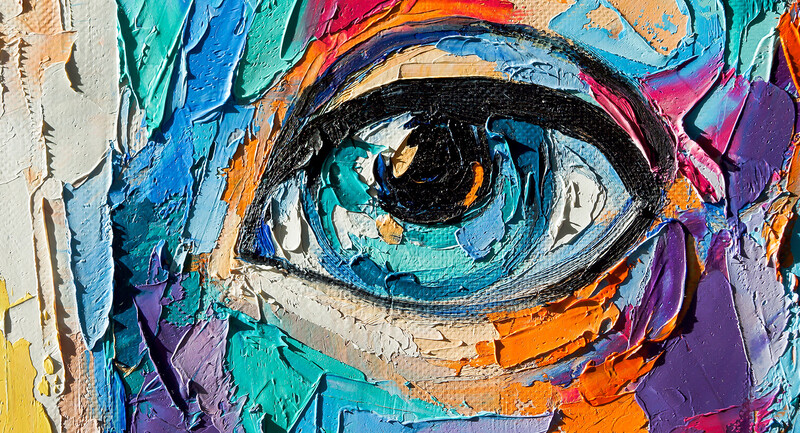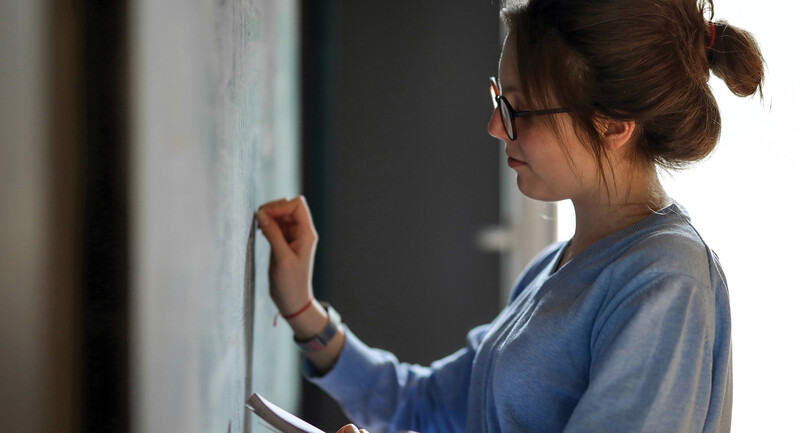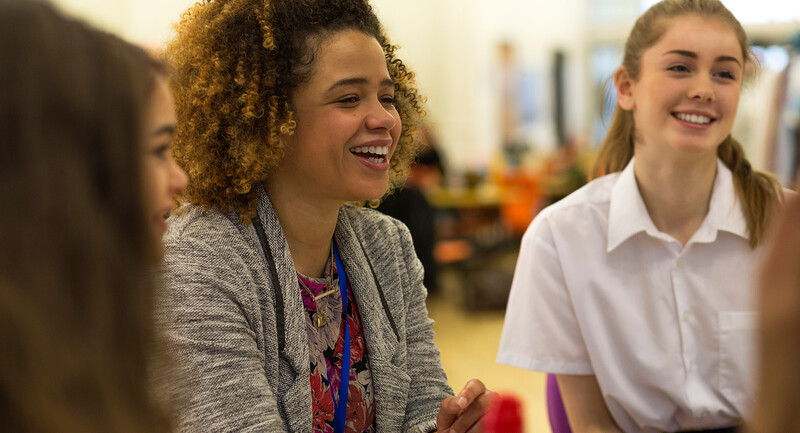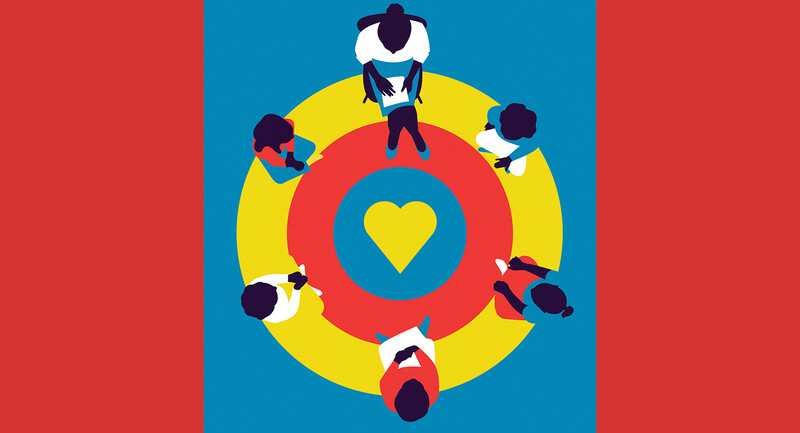Prioritizing students’ artistic expression can improve mental, emotional, and social wellness.
Credit: Mari Dein / SHUTTERSTOCK
Most educators agree that schools play a vital role in offering supports to strengthen students’ mental health and well-being. I’ve most often seen these supports implemented outside of students’ regular academic classes: For example, increasing access to counseling during school, mindfulness practices in the morning, or outreach to caregivers on supporting their child’s mental health. All of these are crucial; yet, as a teacher, I’m also interested in ways we can improve students’ mental and emotional well-being from within the classroom through our curriculum and pedagogy.
Our classes are where students spend the majority of their school days—and a typical day at school in the United States is not neutral in its impact on students’ mental health. Schools can be oppressive spaces. The ways we typically expect students to behave—often limiting talk, social interaction, physical activity, play, and autonomous decisions—conflict with students’ developmental needs. Even with the best of intentions, tradition guides us to evaluate students on how well they comply with our expectations, and we deem those who have trouble complying “difficult.” For students dealing with trauma or mental health challenges like depression and anxiety, successfully navigating this system can be even harder.
To provide a healthier and more meaningful school experience, one area of great potential is the arts; and yet, the arts often occupy the lowest rung on the priority ladder of our education system. Boosting opportunities for student artistic expression is one of the most powerful steps we can take to turn schools into places that help students thrive mentally, emotionally, and socially.
Creating art has demonstrated health benefits. For one thing, artistic creation literally makes our nervous systems healthier. Trauma and anxiety put our nervous systems in a heightened state of vigilance where levels of cortisol, the so-called “stress” hormone, increase. This is exhausting and makes it difficult to open the mind to learning about content that may feel disconnected from our lives. A 2016 study, however, shows that 45 minutes of making art significantly lowers cortisol levels, data which helps back the practices of art therapies developing in the field of psychology (Kaimal, Ray, & Muniz).
For mental health practitioners, art therapy helps patients “explore their emotions, understand conflicts or feelings that are causing distress, and use art to help them find resolutions to those issues” (Psychology.org Staff, 2023). Expressive writing therapy, which draws on the art of creative storytelling, is an increasing avenue of interest to address trauma. When we have painful experiences and no coherent narrative to sort them, our brains tend to suppress information, which can worsen traumatic stress (Markman, 2009). Storytelling helps us order and make meaning of our experiences and express emotions about them. The benefits of therapeutic arts practices can be extended to our classrooms if we borrow responsibly from them. While artistic production as part of a pedagogical approach in academic classes should not be considered a formal therapeutic practice for trauma-affected youth, creative expression can benefit students’ overall well-being and can become a medium for some students to process traumatic events.
I’ve seen the benefits of artistic expression time and again in my own middle school English language arts classes when students write fiction and poetry. Students often choose to write about issues in their lives, but they do so without disclosing which parts are real and which are imagined—one of the benefits of creative work. My colleague who teaches drama sees the same thing when students write and perform their own short plays on a common theme: Students create characters and conflicts, often exploring real situations mixed with humor or fantasy. Art elicits empathy and emotion; when students share their creative work with classmates, they relate to one another in new ways and appreciate their classmates’ imagination, talent, conflicts, and humor. Sharing their art generates a sense of belonging for both the artist and their audience.
The arts also allow students to make decisions, play, express emotions, and represent and process experiences. Art rooms are often inclusive spaces where social outsiders can belong: I remember the photography dark room of my own high school and our beloved art teacher who allowed his students to come develop pictures during lunch. My husband, who immigrated to this country in his senior year of high school, remembers practicing drums in the music room at odd hours because it was the only thing that would calm him during that difficult period. In Laurie Halse Anderson’s seminal YA novel Speak (FSG, 1999), the main character stops speaking after an incident of sexual assault, and her high school’s art room becomes a refuge where she begins to express herself again. These brief anecdotes illustrate the life-changing and even life-saving qualities of the arts. Incorporating more opportunities to create art—both by prioritizing art classes in student schedules and by incorporating art experiences regularly into core classes—not only reduces stress, but also provides students with agency, freedom, and a sense of belonging, which supports their mental well-being.
Providing students with regular, daily experiences creating art in a variety of mediums would necessitate a substantial change in most schools. In the hierarchy of subjects and programming, the arts tend to be at the bottom. We can see this in scheduling requirements in schools, how student achievement is defined, funding, professional development priorities, and even in students’ perceptions about which classes “matter” most.
At best, devaluing the arts seems to come from a belief that artistic abilities are not helpful to students in the professional world (Lilliedahl, 2022). Although it is true that only a select few can and will become professional artists, the skills and sensibilities of the arts are in demand across a range of careers from business to engineering, from communications to medicine. With the automation of so many tasks by computers, many employers are seeking individuals—human beings—who can think creatively. Facts are readily available to anyone who is digitally connected, so it is our ability to make meaning of information and have an emotional impact that becomes valuable. Viewing the arts as unhelpful in the professional world is far from the reality our students are growing into.
Devaluation of the arts in schools can also reflect a less future-oriented agenda: a desire for an education system that seeks to maintain the status quo by creating conforming and compliant students, rather than students who are active and critical participants in democratic processes. Authoritarian governments limit artistic expression because art “creates pathways for subversion,” while democratic societies protect artistic freedoms (Ewing, 2017). For people from oppressed groups, the power structures of the status quo are not a safe place, and an education system that perpetuates existing inequities is a tool of oppression. Conversely, when the arts are supported, everyone benefits. The arts help us see possibilities, alternate realities, and divergent perspectives. They prompt us to question our existing views, expectations, and identities. Art is powerful! If we want our schools to resemble democracies, students’ artistic production is a key barometer and driver of a healthy school culture. And in a healthy school culture, students are more likely to feel safe, respected, supported, and included, all of which impact young people’s mental health and well-being.
We can boost the arts for students in two major ways: First, school leaders can make sure every student participates in an art, music, drama, or a related class every quarter or semester. Second, teachers in all academic subjects can integrate the arts into their curriculum and pedagogy. For example, a social studies teacher I know has her students write short pieces of historical fiction or draw comic books to accompany their research for each historical era they study. In Spanish class, students have shared with me that they create artistic work, from dioramas to posters, depicting cultural elements and key vocabulary. Math students could diagram buildings, reproduce pictures on a large scale, or create songs to remember formulas. Science students could make models for scientific processes or dramatize significant moments in the lives of inventors.
In my own ELA classroom, students write creatively as a part of every novel study or literature unit and share their imaginative work with peers. We also engage in “free-writing” where students write for short bursts of time with complete choice of genre and content (Sacks, 2020). These practices benefit students’ academic development as writers and thinkers, as well as their social-emotional growth, which I explore in depth in Who Gets to Write Fiction? Opening Doors to Imaginative Writing for All Students (W. W. Norton, 2023). Through the freedom to imagine and make choices in the story world, young people gain a sense of autonomy and control. This is important for all young people to feel about their work, but for those dealing with traumatic events, a need for control can be a response to the lack of control they felt in the face of their trauma. Creative writing provides a healthy outlet for control. Anecdotally, I’ve seen trauma-affected students who struggle to focus on most schoolwork approach creative writing by committing fully and voluntarily to the work. In many cases, the content they choose to work with in the story is connected, directly or metaphorically, to their own experiences.
When integrating the arts into any academic subject, one important caveat for teachers is to focus on the process of making art, rather than the final artistic product. This focus is key to tapping the mental health benefits of artmaking because students need to be able to make exploratory, creative decisions within their process without constant fear of “messing up.” It’s the process of making that matters for mental health and well-being. Our students need to be open to what comes forth when they are making art, rather than competing against external standards or aiming for a predetermined outcome. The process of artmaking is where students find joy in creation, freedom in expression, and power in their imaginations.
In the classroom, teachers can shift students away from product and toward process by providing time and a protocol for students to reflect on their artistic work: What did you choose to do and why? What skills did you practice in this work? What went well? What was challenging? If you could do this again, what might you try differently? Reflecting helps students develop self-awareness, identify what works for them, and name issues they can problem-solve in the future. Creating a coherent narrative around their own experience as an artist and learner helps students build their identity, as well as their sense of trust in their environment and their experience.
At the schoolwide level, boosting artistic creation across disciplines would ideally be a collaborative effort: Together, teachers could brainstorm ways to integrate arts into their content areas, art teachers could share their most successful teaching strategies with content-area teachers, and all teachers could observe how students respond to creative tasks: Which students feel comfortable and shine? Which students need help finding a way in, and how can we help them? How does the energy in the room feel when students are working creatively?
Finally, remember that just a few sessions of artmaking can significantly improve students’ well-being. We cannot hope to reach students who are anxious, depressed, or traumatized with a stream of traditional top-down teaching. Leveraging the arts is one of the ways we can make immediate, positive change in our classrooms to benefit our students’ mental health.
Editor’s note: Parts of this article were excerpted and adapted from Who Gets to Write Fiction? Opening Doors to Imaginative Writing for All Students by Ariel Sacks. Used with permission of the publisher, W. W. Norton & Company, Inc. All rights reserved.
Copyright © 2024 Ariel Sacks
References
•
Ewing, Eve. (2017, April 6). Why authoritarians attack the arts. The New York Times.
•
Kaimal, G., Ray, K., & Muniz, J. (2016). Reduction of cortisol levels and participants’ responses following art making. Journal of the American Art Therapy Association, 33(2).
•
Lilliedahl, J. (2022) Why the arts are not considered core knowledge in secondary education: A Bernsteinian analysis. Journal of Curriculum Studies, 54(2),165–178.
•
Markman, A. (2009, October 20). Trauma and the benefits of writing about it. Psychology Today.
•
Psychology.org Staff. (2023, July 11). What is art therapy?
•
Sacks, A. (2020, January 28). How ‘daybooks’ helped get my students writing. EdWeek.









